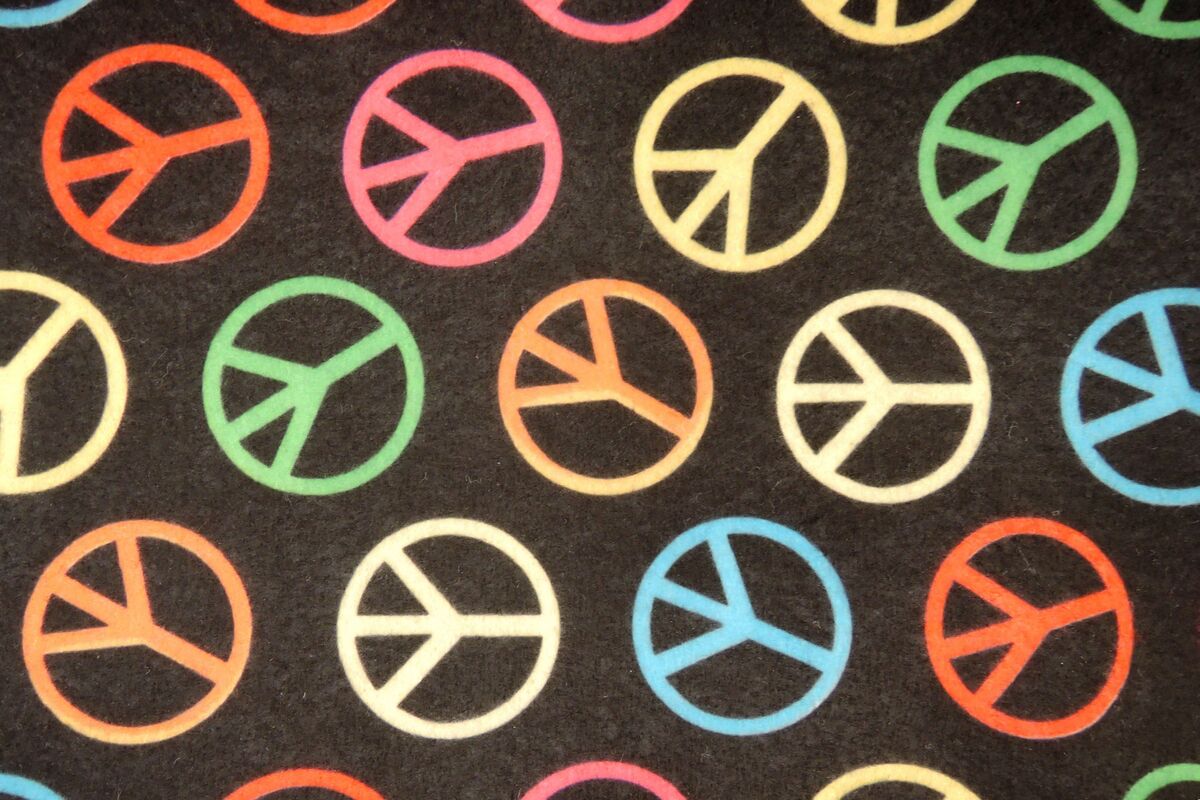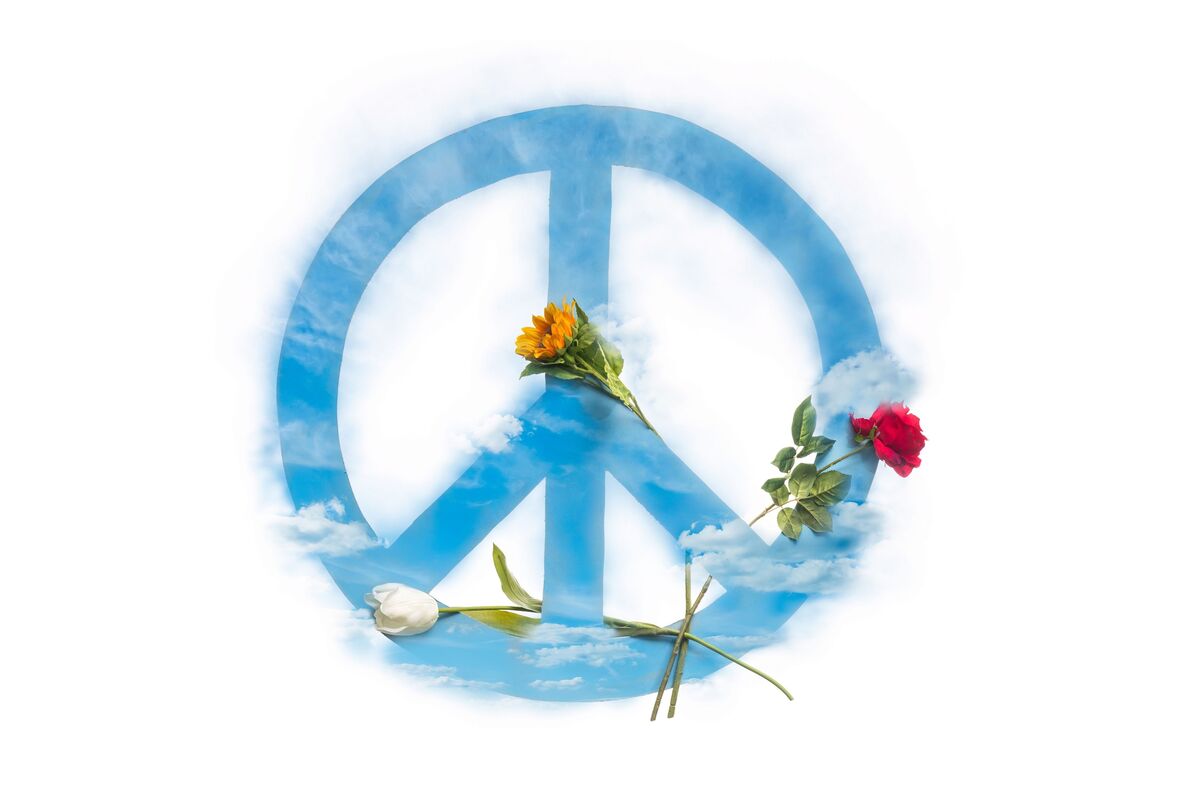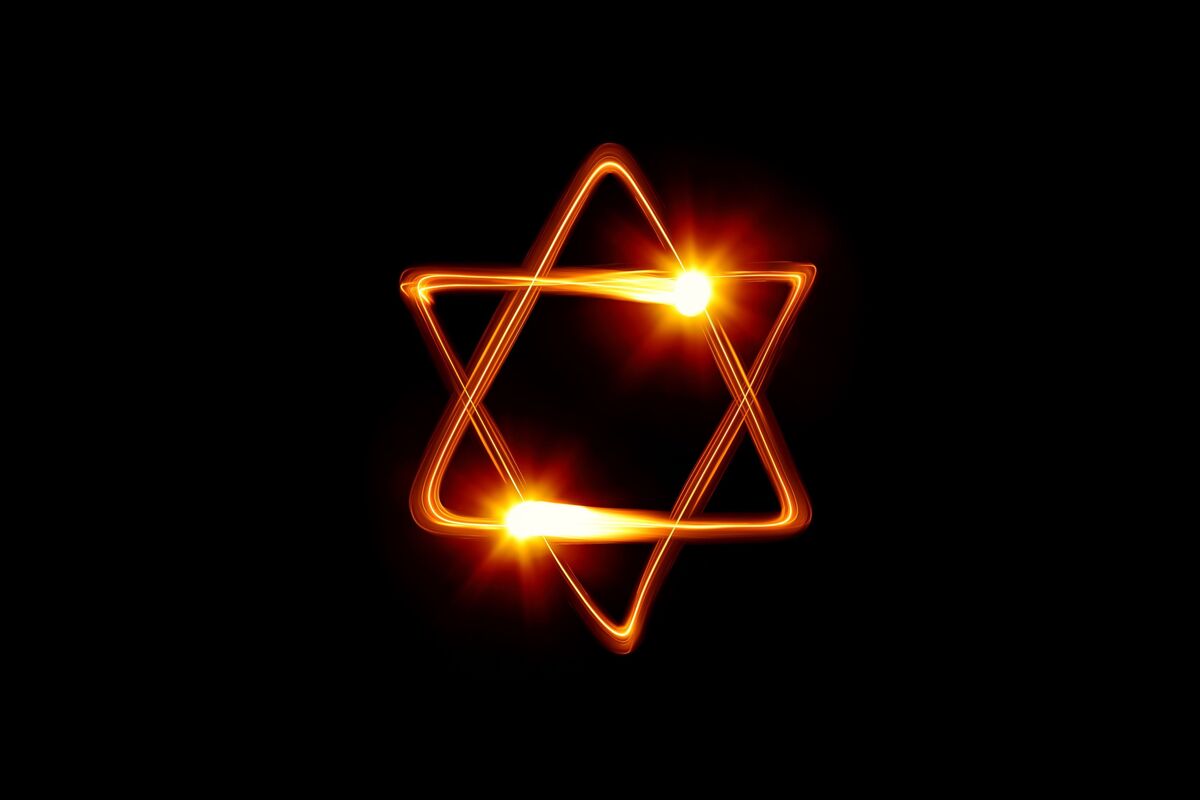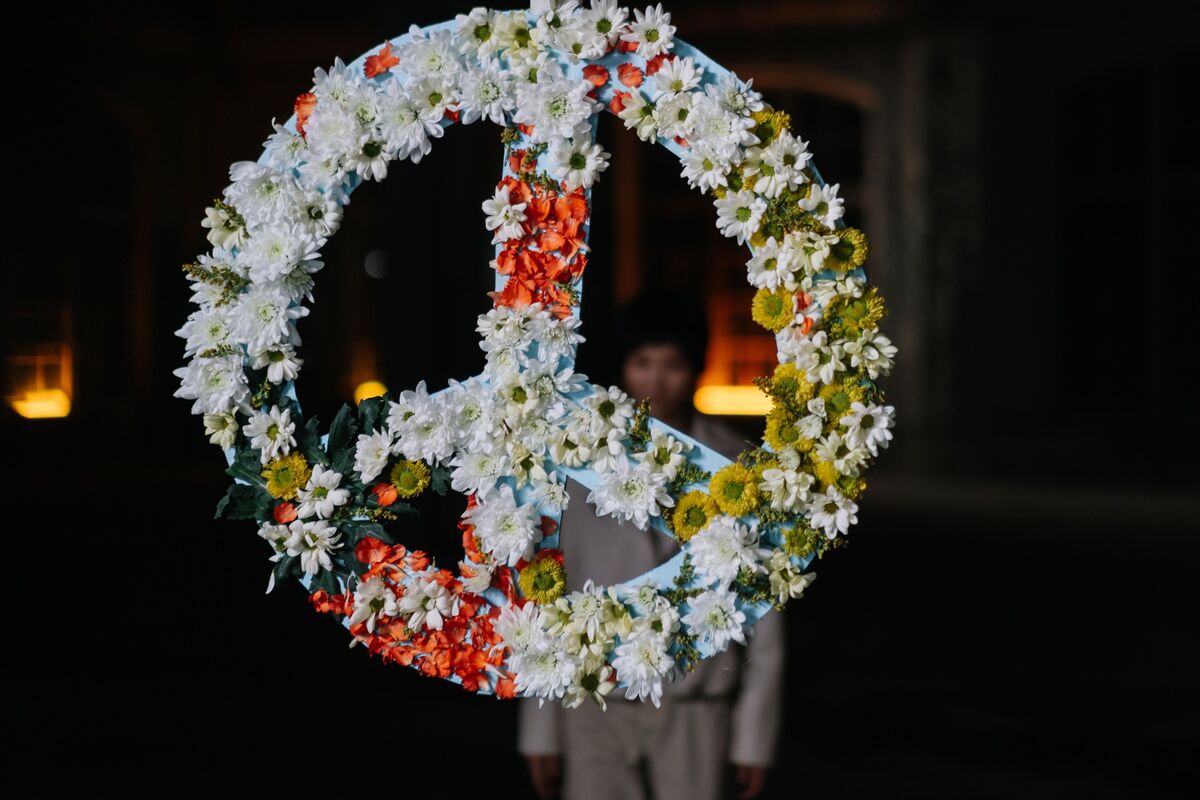Table of contents
What is the meaning of the peace symbol?

There are several popular movements that make use of the peace symbol, such as engaged organizations that have made and make use of it in the search for their respective ideals. This symbol represents love, peace, equality, unity, harmony and a relentless search for the end of wars of all kinds, conflicts and prejudices that plague humanity.
In a way, this symbol was very important throughout history, because it was used in search for civil rights, political fights, protests and different ideologies in favor of an ideal: peace. In this article, you will know exactly how this symbol appeared, which movements appropriated it and how the peace symbol became so popular all over the world, throughout history. Learn more below!
The origin of the symbol of peace

The peace symbol was created precisely in a very turbulent moment. The British Gerald Holtom felt a deep despair to see humanity threatened, when they began to build nuclear weapons in England. As a form of protest, he decided to create a symbol, which took a giant proportion around the world.
Initially, two English organizations promoted demonstrations in the region of London, England. Later, the peace symbol came to be popularized by the hippie movement and by many others.
Thus, the famous expression "peace and love" was disseminated in the form of protests by hippies of the time. But it was not only these groups that made use of this symbol. Next, read what other movements that made use of the peace symbol!
Gerald Holtom
Gerald Herbert Holtom, born January 20, 1914, was an important British artist and designer who went down in history for creating the symbol of peace.
He designed the logo in the year 1958 and in the same year, the symbol was used in the British nuclear disarmament campaign. Soon after, it became known as the symbol that represents international peace.
Thus, professional designer and artist Gerald Holtom explains that the symbol was created in a moment of agony and despair in his life. He says he felt a deep urge to express his feeling. Here, Gerald explains his idea in detail:
I was desperate. Deep despair. I drew myself: the representative of an individual in despair, with his palms extended outward and downward in the manner of Goya's peasant before the firing squad. I formalized the drawing into a line and placed a circle around it.
Nuclear disarmament
There is a treaty of non-proliferation of nuclear weapons, signed in 1968. The agreement was created 10 years after the creation of the then symbol of peace, which was effective on March 5, 1970. The agreement was signed by 189 countries, but 5 of them assume to have nuclear weapons until today, these being: United States, Russia, France, China and the United Kingdom.
Thus, the idea was to limit the nuclear armament of these five countries. Thus, the then powerful Soviet Union was replaced by Russia, which is now obliged not to transfer nuclear armament to the so-called "non-nuclear countries". However, China and France did not ratify this treaty until 1992.
London to Aldermaston
The first anti-nuclear march took place in England, with a protest that gathered thousands of people walking from London to Aldermaston, and was the first time the symbol of peace was used. Ironically, it is the city where, to this day, the United Kingdom's nuclear weapons program is developed.
Throughout the 1960s, many other marches took place in the form of protest. On April 7, 1958, the first march against the manufacture and use of atomic weapons included 15,000 British people, who went from London to the nuclear research center, which is located in Aldermaston, and used the symbol against the spread of nuclear weapons.
The hippie appropriation
The popular phrase: Peace and Love (Love and Peace, in English) is associated with the hippie movement, which also makes use of the peace symbol. By the way, this is perhaps the best known phrase of the movement created in the 60s.
The hippies took to the letter their ideologies and lifestyle totally against the status quo of the time. They were in favor of the Union, had a nomadic life - even living in the city, they lived in constant communion with nature - and were assiduous deniers of wars. In addition, they were not the least bit nationalistic.
Thus, the motto so well known as "peace and love" reveals the stance and defines the ideals of the hippies, who constituted a movement in search of civil rights, anti-militarism and a bit of anarchism in its essence.
The reggae settlement
The Rastafari movement and the reggae music genre are intrinsically related and also adopted the peace symbol in the 1960s. The Judeo-Christian religious movement emerged in Jamaica in the 1930s by peasants and descendants of African slaves.
Thus, the religion became internationally known through the lyrics of reggae - the musical genre originating from Jamaican slums, which became popular worldwide in the 1970s. The members of this movement are better known as rastas. In the Rastafarian belief, Ethiopia is a sacred place. For them, the country is Zion, the famous promised land described in the Holy Bible.
Olodum's appropriation
The traditional Afro-Brazilian Carnival block, Olodum, is also a supporter of the peace symbol, using it as the logo of its movement, which was created in Bahia. The movement manifests Afro-Brazilian art and culture through its music and dances.
Thus, the Afro-Brazilian drum school was created on April 25, 1979. Since then, during carnival, the residents of Maciel Pelourinho, Bahia, take to the streets in carnival blocks to enjoy the famous Bahian carnival.
The Olodum group was recognized by the UN as intangible cultural heritage and thus became one of the most important cultural manifestations of world music.
Other symbols of peace

In addition to the movements that have appropriated the peace symbol, we can find it on accessories, clothes, stickers, and more. Surely, you've seen this symbol somewhere printed.
Keep reading and you will be surprised with how this symbol diversifies and transmits peace in a simplified way, through colors, objects, gestures and logos. Check it out!
White Dove
Automatically, when we see a white dove, we inevitably associate it with the symbol of peace. Although this comes from a religious belief, it is recognized even by those who have no religion or belief whatsoever.
This symbol was promoted by the Catholics. For the religious, the denomination appeared when Noah received from a white dove an olive branch, soon after the flood reported by the Christian holy book.
Thus, the white dove became the symbol of peace and today it is recognized worldwide. For many, the bird symbolizes peace among mankind, but in the religious interpretation, the white dove is one of the symbols of the Holy Spirit, the Supreme Being (God).
"V" with fingers
The V sign with fingers was adopted in the 1960s by the counterculture movement. Since then, it has become more of a sign representing the symbol of peace, being a gesture made with the fingers and palm outwards.
The symbol is a gesture made with the hands, in which the index and middle finger form a V, which also represents a V for Victory.
Thus, it is also used as a form of offence, when the palm of the hand is turned inwards. In the United Kingdom, the purpose may be to affront someone's authority or simply to say that one does not submit to control and order. It is also widely used in South Africa, Australia, the Republic of Ireland and New Zealand.
The color white
For those who wear white clothes on New Year's Eve, the belief says that the color white is a symbol of peace, harmony and cleanliness. This color is also known as the color of light, because it symbolizes virtue and love for God.
White is also known as the symbol of peace, spirituality, virginity and innocence. In the West, the color white means joy, but in the East, this color can have an opposite meaning.
Cultural Symbol of Peace
The Röerich Covenant epitomizes the symbol of peace. It was created by Nichola Roerich in order to protect cultural artifacts. The covenant is used to protect historical, cultural, educational, and religious scientific discoveries and achievements throughout humanity.
Thus, the flag made by Röerich is used on historic buildings and is intended to protect them from destruction during wars. The treaty proposes that all places that have historical significance be preserved and respected by all nations, whether in times of war or peace.
Therefore, the flag of the Röerich covenant symbol is an official regulation and represents the symbol of peace for all mankind, protecting cultural treasures.
Pipe of Calumet
The well-known Calumet pipe is considered a sacred pipe. In Europe and Brazil it is known as the "peace pipe", being an object often used by North American natives, and represents peace.
The Calumet pipe is a very specific object, widely used by several indigenous cultures of the Americas for sacred ceremonial rituals.
Thus, the phrase: "let us smoke together the pipe of peace" is a way of demonstrating the intention to end wars, hostilities and enmities. It is a way of prioritizing communion between distinct cultures and peoples.
Olive branch
The olive branch is one of the symbols representing peace and has a connection with the white dove. In the sacred scriptures of the bible, after the great flood that, according to the story told, devastated the face of the Earth, Noah releases a white dove towards the woods, and then it returns with an olive branch stuck in its beak.
This was Noah's sign that the great flood that ravaged the Earth had ended and that a new time was beginning. Thus, for most Christians, the branch symbolizes Victory over sin, but for others, the olive branch symbolizes peace and prosperity.
White poppy
The white poppy was introduced and recognised by the UK women's co-operative in 1933 as a symbol of peace. During the war going on in Europe, the poppy translated that in order to win conflicts, it was not necessary to shed blood.
Thus, at the end of the First World War, women decided to sell white poppies as a way of asking for pacification. They were in all the fields and graves of Europe during this turbulent period.
Paper crane
The little girl Sadako Sasaki moved the world and is perhaps the greatest representative of the symbol of peace. Sadoko, her mother and brother came into contact with the radiation caused by the explosion of the atomic bomb, and unfortunately, the girl of only 2 years developed a serious case of leukemia.
So there is a Japanese legend that the tsuru bird can live up to a thousand years. Then one day, Sadako's friend Chizuko Hamamoto paid a visit to the hospital and told the girl that if she could make a thousand origami tsuru, she could make a wish.
In this way, the girl managed to make 646 Tsurus, and before she left, she called for peace for all mankind. Soon after her death, her friends made the missing 354.
White Hands
The former President of the Constitutional Court, Francisco Tomás y Valiente, was assassinated with 3 shots at close range in 1996. He was a professor of the history of law at the Autonomous University of Madrid and was attacked by ETA.
This case caused a great commotion among the students, who took to the streets with their hands painted white, representing the symbol of peace.
Broken Rifle
The Broken Rifle is a peace symbol that exists because of War Resisters. This is an International group that uses the emblem of two hands breaking a rifle. This illustration refers to the end of armed struggle and the symbol of peace.
The War Resisters group was founded in 1921, and their emblem is simple and gets their message across clearly.
Shalom or Salaam
Shalom is a Hebrew word, whose meaning in Portuguese is Peace. Thus, the word is written on T-shirts, signs and flags and is another symbol of peace.
In addition, Salam is an Arabic word that also means peace. This is used in the attempt to pacify the Middle East in the Arab-Israeli conflict.
Six-pointed Star
Better known as the Star of David, the six-pointed star also represents the symbol of peace and protection. It is made up of two triangles: one with the point up and the other with the point down, forming a star.
The symbol is also stamped on the flag of Israel, known as the supreme shield of David and used by Judaism, Santo Daime, etc.
How did the peace symbol become so popular?

It was inevitable that the peace symbol would not become so famous in the world, with so many stories ranging from ancient times to the present day. So one fact is certain: even before the symbol created by Gerald Holtom, there was already a need for peace to be prevalent in the world.
Thousands and thousands of years have passed, and humanity is still crawling, groping in search of the so dreamed peace. Therefore, it is important that it makes itself present and that humanity realizes that peace is and always will be better than war!

